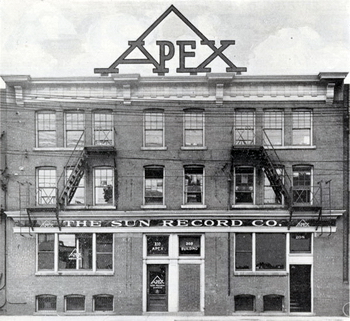Canadian Antique Phonograph Society
The History of the Compo Company - Part 2

In 1923, apparently as a reply to the successful National Music Lovers firm, selling records by mail order, the short-lived Canadian Music Lovers Library label appeared. About two dozen records were issued; however, judging from their relative scarcity, the venture was nowhere near as successful as its American counterpart. It is not yet known if Compo pressed the records for some imaginative entrepreneur or if the venture was a Compo project.
From 1920 onward, there had been a number of experiments with electrical recording. Compo was involved in this, as well, and their electrically-made sides actually appeared before the better-known issues from Columbia and Victor. The actual honour of being first was gained by the small Chicago-based Autograph firm, who sold records made electrically (albeit abysmally) in 1924. These early Compo electric sides may well explain why Victor's Canadian subsidiary promoted the Orthophonic process (as "V.E.") from its inception, unlike their American mentors. At the end of 1924, the use of Gennett masters was virtually dropped, apparently due, at least in part, to poor sales.
The Starr name was maintained, with its "Gennett" sub-credit deleted, and a new 10000 series using Plaza material and 23000 series using Compo material replaced the 9000 Starr-Gennett series, which dwindled to a halt in early 1925. The Starr name would continue into the late 1940s, long after the parent firm itself left the record business; it was apparently restricted primarily to Quebec, with French-language material appearing on an 11000 series and a 12000, later becoming 15000 series. The latter appeared also under the Apex name, apparently for U.S. sale to the French-Canadian population in New England.

One practice of Compo produced some extremely rare items. This was the manufacture of several labels during the 1924-1927 period for export to Australia and New Zealand. Labels include Palings, Leonora and Beeda, the latter two using usual Compo issue numbers. Canadian Starr records were apparently exported as well.
Finally, in late 1924, the first of a bewildering array of "cut-price" labels under the name of Domino appeared. This was related minimally, if at all, to the similarly-named U.S. label, although both drew primarily from Plaza. The Plaza material appeared, invariably pseudonymously, on a 21000 series, while Compo and miscellaneous material was issued on a 21500 series. The 21000 numbers quickly reached 21499 and were replaced by a 31000 series in late 1928. In 1925 the Microphone label, using 22000/22500 numbers, and the Lucky Strike label, using 24000/24500 numbers appeared. It is possible than one or both of these were intended for a store chain. Meanwhile, Compo had made an eventually unsuccessful effort to enter the "race" record market in the U.S., for unknown and hardly explainable reasons, with the Ajax label. This produced a number of records highly valued by collectors, but no particular success, and the records were being remaindered by mid 1925.

